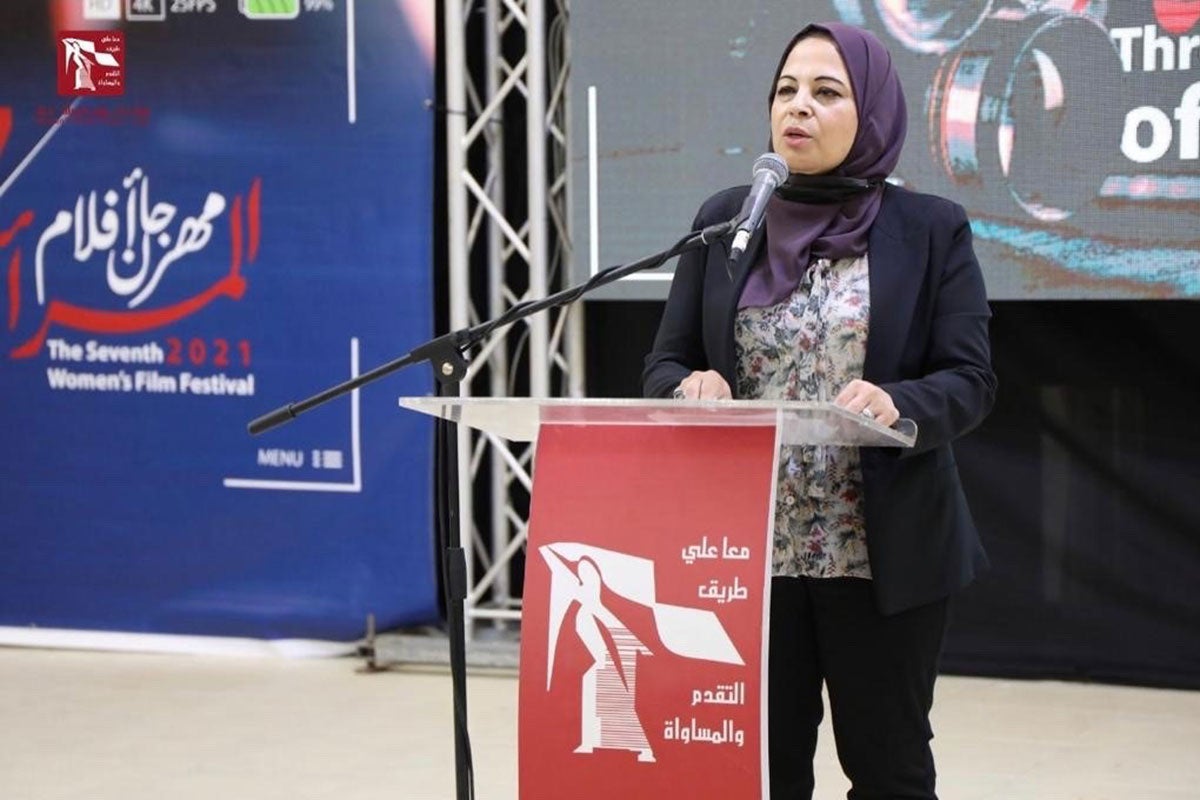Women’s organizations provide a lifeline to women in Gaza
Date:
There are 614 million women and girls living in conflict affected areas today. From Gaza to Ukraine, Haiti, Sudan, and Afghanistan, their numbers are going up, as geopolitical conflicts, climate change, health and food crises intensify.
When crisis hits, women and girls experience increased risk of gender-based violence and loss of property and income. In fragile contexts, women and girls are nearly 8 times more likely to live in poverty than men, and in every region of the world, they are more food insecure. Yet, the financial and aid infrastructures continue to fail women, with devastating consequences. Less than one per cent of official development assistance (ODA) is going directly to women’s rights organizations. Making reliable, flexible, and multi-year funding accessible to local women’s organizations is urgent.

More than 2 million Palestinians in Gaza face inhumane living conditions today. Gaza has become a protection crisis for women, with close to one million women and girls displaced and two mothers killed every hour, since the beginning of the crisis.
Yet, women-led and women’s rights organizations continue to operate, providing a lifeline to the communities where they work. UN Women’s analysis shows that 83 per cent of women’s organizations surveyed in the Gaza Strip are at least partially operational, mainly focusing on the emergency response. However, just 0.09 per cent of funding to the 2023 Flash Appeal has directly gone to national or local women’s rights organizations.
“Our main office is in Gaza City, which has been [damaged] by Israeli military bombardment. Due to safety concerns, we cannot assess the full extent of the damage,” said Amal Syam, General Manager of Women’s Affairs Center (WAC).
Before the Israeli military bombardment of Gaza started in October 2023, the Center employed 100 staff and assisted more than 170,000 people every year.
“To support the people of Rafah, where around 1.5 million are seeking safety, we opened a new office at the center of Rafah,” Syam shared. We have provided humanitarian assistance to women, including psychological support, legal counselling, and distributed cash assistance, hygiene and dignity kits.”
The Center aids the most vulnerable, shares stories of women’s experiences, and is documenting the war's impact and women's urgent needs.
Hundreds of women visit the Rafah office daily, seeking assistance to meet their basic needs, such as food, water, mattresses, and sanitary products. However, Syam said the assistance they can offer is just a fraction of what is needed.
Syam lives in a classroom at a non-governmental organization, which shelters displaced persons. Like many others, she has been displaced multiple times and experienced personal loss, yet she continues to work every day. When she returns to the shelter, there is usually not enough fuel to cook food. Lately, she has been burning books for fuel.
“Supporting grassroots women’s organizations in Palestine is critical,” said Syam. “Without adequate support and funding, these organizations may struggle to continue providing essential services.” The implications of such funding shortfall are dire in an already unprecedented crisis. It could cut off access to vital resources and without their advocacy efforts, the voices of many women in Gaza would go unheard.
Syam also stressed on the need for an immediate humanitarian ceasefire in Gaza and the provision of humanitarian aid, adding, “it is imperative to strengthen the role of civil society institutions, especially women’s organizations that have been working since the onset of the war, and to enhance partnership and coordination with international and UN agencies to make sure that gender issues are fully addressed in all humanitarian interventions.”
Read more: Why investing in women’s organizations is critical during crisis: Five stories of resilience.